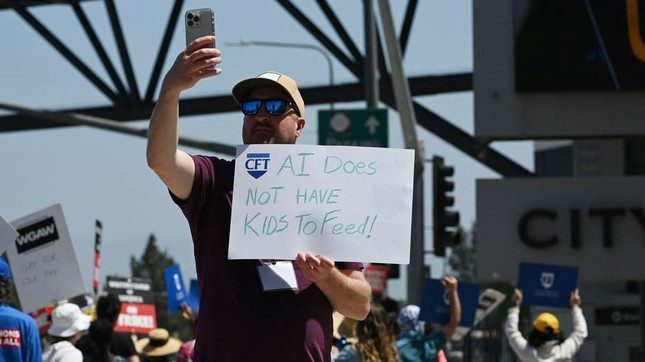The acting profession is facing a significant drop in wages in the current streaming era. Many actors cannot make ends meet. According to the Screen Actors Guild-American Federation of Television and Radio Artists (SAG-AFTRA), film studios including Apple, Amazon, Netflix, NBCUniversal, Sony, and Paramount are refusing to negotiate wage increases and share streaming revenue with actors.
“Most of our members are not able to survive on the current minimum wage of $26,000/year, and a large portion works part-time,” said Fran Drescher, president of SAG-AFTRA.
Representatives of the film and television production alliance claim that Hollywood is misjudging the role of actors in the current stagnant state.

Minimum Wage Negotiations
According to SAG-AFTRA, there are two main points of contention in the wage negotiations. Actors are demanding higher wages and stricter regulations regarding the use of artificial intelligence (AI) in creative projects.
In terms of wages, actors want an 11% increase over the current base salary this year, followed by an 8% increase in the next two years. This demand aims to counteract the high inflation rates of the past two years, according to SAG-AFTRA reports.
However, studios are only offering a 5% increase this year and 7.5% in the following two years, according to the data.
Actors want to receive a fair portion of royalties, especially when films are streamed after their initial release, from theaters to television. This is a significant income source for actors who are not top-tier stars. However, this situation is changing rapidly.

The rise of streaming revenue has drastically altered payment structures, posing significant risks to the acting profession, which is already known to be quite unstable. Streaming services do not pay actors unless their work is being viewed.
Instead, actors receive lower payments when films are streamed on these platforms. As a result, actors earn less when their films are distributed to streaming companies, even for popular films.
Duncan Crabtree-Ireland, chief negotiator of SAG-AFTRA, stated: “The current model devalues our members’ worth, directly impacting their ability to make a living.”
Brandee Evans, who appeared in 17 episodes of the Starz series P-Valley, noted that the residuals from her work were nearly negligible. Actor Mark Proksch mentioned in an interview with The Wrap that guest roles in 19 episodes of The Office provided him with significantly more income than his lead role in What We Do In the Shadows on FX.
Mandy Moore, who starred in the well-known series This Is Us, revealed that she received a residual check for streaming worth just 1 cent, an alarmingly low amount, which does not allow her to purchase anything that actors typically receive.
SAG has emphasized that its members should receive a portion of the revenue from the streaming platforms, but studios have refused, according to the reports.
AI and Its Impact on Actors
AI has become a contentious issue during negotiations. Actors want assurances that they will not be replaced by AI, especially in significant roles. They seek to ensure that AI cannot replace them in the creative process.
There are concerns that AI-generated replicas could replace actors, particularly those in leading roles. For studios, roles in films could potentially be replaced or altered, but for many, acting is a profession that allows them to maintain their livelihoods and support their families.
Representatives of SAG-AFTRA have labeled AI as “the future threat” to the acting profession. “While it may be possible for an actor to be featured in several films, the essence of our work is being scanned, paid, and then after that, the entire rights will belong to the studio. They could use our likeness in any project they desire, without consent or compensation. In other words, we are selling ourselves,” the spokesperson stated.

However, the spokesperson for the Alliance of Motion Picture and Television Producers (AMPTP) disagrees with this assertion. The latest proposal from studios states that “only one company may use the likenesses of background actors in films. Any other use must have the consent and compensation of the actors involved.” The spokesperson spoke with CBS.
While a few major stars might earn astronomical salaries exceeding millions of dollars per film, most other actors earn significantly less, as demonstrated by Mandy Moore’s 1 cent streaming residuals.
Research shows that approximately 87% of SAG-AFTRA members earn less than $26,000 a year from acting. This situation complicates the conditions necessary for health insurance benefits from the union.
In 2022, the average hourly wage for actors across the U.S. was around $18/hour, according to the Bureau of Labor Statistics. This means that more than half of actors earn below the national average wage. In California, the average hourly wage for actors is $27.73, while in New York, it is $63.39.
Such hourly wages can become daily incomes, but this only happens if actors are employed full-time. The nature of acting work is that it is not year-round, meaning most actors earn very little, and many have to take on side jobs to make ends meet.





















